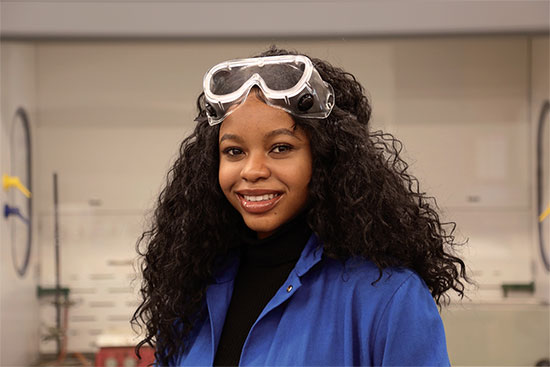
Chemistry major Olive Anagu ’18 has an idea for making dairy more appetizing for the millions affected by lactose intolerance.
To help counteract this intolerance, dairy milk is normally treated with lactase, an enzyme that breaks down lactose. The issue with this method, Anagu said, “is that it leads to the introduction of more preservatives and chemicals that need to be in the milk,” which some consumers would rather avoid.
“I absolutely love milk and drink maybe four full glasses each day,” Anagu said. “So, this was an issue that was very personal to me and I believed I could cause a change with a little application of my biochemical background.”
She may have a solution, and it involves beads.
Anagu had come across a study in which other chemists used “column chromatography” to remove a chemical compound from a mixture. Anagu realized that the same method, which involves running the mixture through a column of specialized silica beads, could remove the lactose from milk.
After testing her theory in the Science & Learning Center’s organic chemistry lab, Anagu found that the column process was working, immobilizing 99 percent of the lactose on the column and breaking down 60 to 70 percent of the lactose in the filtered milk.
There was a hiccup. Straight out of the carton, milk is too thick to run through the column. She had to filter it first, which removed a large amount of the beneficial fats and proteins that make milk “the wonder food” that it is, Anagu said. Milk is one of only two foods that supply all of the daily nutrients that a complex organism needs; the other is eggs.
Though the need for filtration disappointed Anagu, she has ideas about how she might be able to modify the process.
According to Assistant Professor of Chemistry Ralph Isovitsch, Anagu is the first to take this novel approach. Moreover, it’s economical. She was able to reuse the columns throughout her tests, so they could prove to be a cost-effective option for consumers to use at home.
“It still needs quite a bit of work to become a world-renowned advancement, but it was definitely on the right path to my goal, and for that I have to thank my mentors, professors [Christina] Bauer and Isovitsch, who helped a lot with my trouble shooting through the project,” said Anagu.
